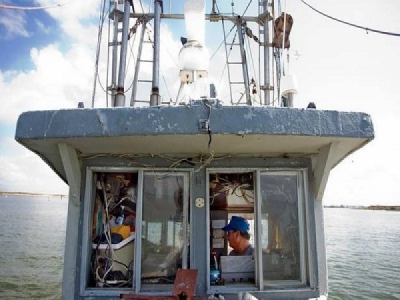
Posted on August 28, 2017
By Jessica Priest, Victoria Advocate
The U.S. Army Corps of Engineers thinks if it deposits sediment on the west side of the Matagorda Ship Channel instead of the east side, it won’t have to dredge as often.
The deadline to comment on this proposed change is Sunday.
Then, the commander of the U.S. Army Corps of Engineers Galveston’s division will approve or disapprove of it. Every year, about 3.4 million cubic yards of sediment is dredged from the ship channel.
The agency thinks by moving the three placement areas to the west side of the channel in Lavaca Bay, where the currents and wind are not as strong, it will save $2.5 million a year, said Randy Cephus, Chief of Public Affairs for the U.S. Army Corps of Engineers’ Galveston district.
In an environmental assessment completed this summer, the Corps estimated moving the sediment to the west would bury 0.19 acres of oyster reefs.
The agency also predicted the effects to wildlife in Lavaca Bay will be minimal and temporary.
Additionally, the water is expected to become more cloudy and warm in the work zone and the Texas Commission on Environmental Quality is evaluating whether the proposal complies with the Clean Water Act and other regulations.
When asked why the Corps could not take the sediment further than the bay and deposit it on a dredge spoil island, such as Chester Island, where colonial water birds nest, Cephus said the additional pipelines and booster pumps needed for that are costly.
“Disposal at Chester Island is not a viable option based on the distance from the dredging site. Also, Chester Island is currently being managed for placement options to accommodate dredged material from the Gulf Intracoastal waterway and the lower reach of the Matagorda Ship Channel,” Cephus said.
In February, a contractor hired by the Corps finished depositing sediment on Chester Island, also known as Sundown Island. Then, the island grew by 21 acres.
The Corps is responsible for keeping the ship channel at a depth of 36 feet.
Some fisherman are concerned about how this change could affect oyster reefs. They said their customers want speckled trout and red fish.
“The oysters are what attract the fish,” said Capt. Mike Powell of All Seasons Guide Service.
Capt. Jake Huddleston agreed and wondered how the Corps could predict the change will affect such a precise acreage of oysters.
“It’s something that’s got to be done, I know that,” Huddleston said of the dredging.
On the other hand, the sediment could make the water shallower, attracting bait that then attract game fish, said Capt. Ron Arlitt, of Scales and Tales Guide Service.
As the year goes on and sediment flows back into the channel, ships have to lighten their loads, said Charles Hausmann, executive port director of the Calhoun Port Authority.
“What that does is increase the transportation cost to move product,” he said.
The Port Authority and the Corps are 16 months into studying the feasibility of deepening and widening the ship channel, which spans 26 miles to the Gulf of Mexico, and moving where sediment is placed will not affect that, Hausmann said.
“To get it widened and deepened, we could continue to grow and expand and create new jobs,” he said.
Source: Victoria Advocate





